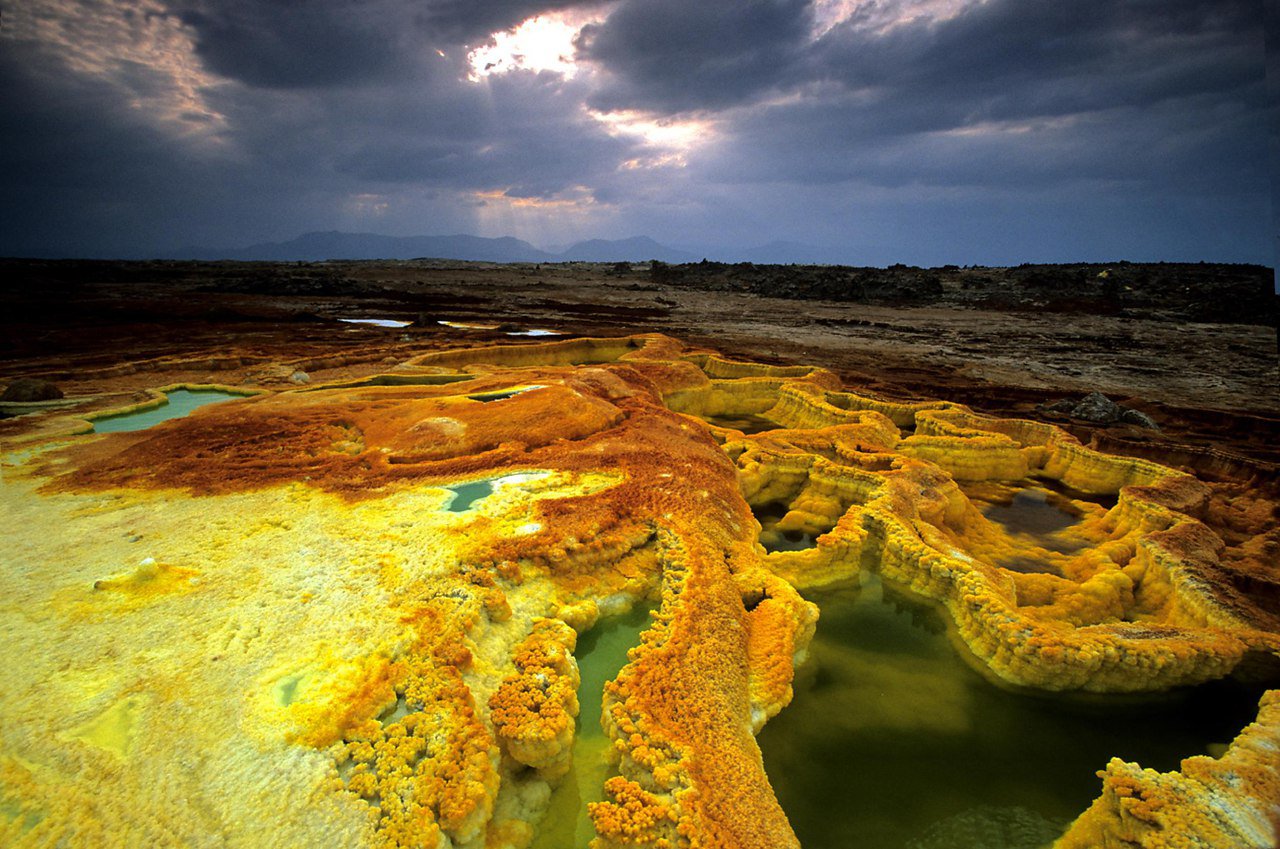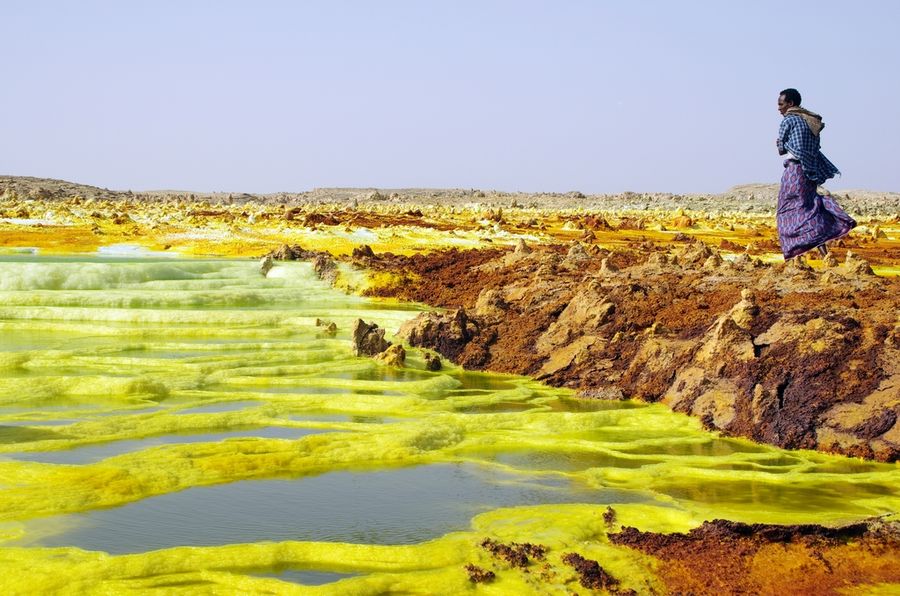

The presence of liquid water should not be considered as an absolute planet habitability criterion. This conclusion was reached by the scientists of the French National Center for Scientific Research (CNRS), who recently found the place on Earth where no life exists despite abundant water.
The infernal landscape of the Dallol geothermal area in the depression of Danakil in Ethiopia is amazing with specific landscapes similar to extraterrestrial ones. Most of all, they resemble the surface of Io, the Jupiter’s satellite. This is the ‘creation’ of the same-name active volcano, the lowest in the world. During the last Dallol eruption in 1926, a large explosion created two large pools and dozens of smaller ones - almost ponds - located 48 meters below sea level. The water in them is either very acidic or hyperacid and is magnesium-rich, and the temperature reaches 108°C. The ponds are surrounded by salt terraces formed by leaching potassium salts, manganese, and iron onto the surface. At the same time, the toxic gases still emanate and the volcano erupt sulfur- and andesite-containing masses. And it is truly a hell, this is one of the most torrid environments on the planet, where in the dry season from March to September, daily temperatures of +48°C is considered the norm.

Scientists became interested in his idea, the first samples even revealed quite ordinary inhabitants of the microworld, but they were very disappointed with a more thorough study.
“After analysing many more samples than in previous works, with adequate controls so as not to contaminate them and a well-calibrated methodology, we have verified that there's no microbial life in these salty, hot and hyperacid pools or in the adjacent magnesium-rich brine lakes,” said biologist Lopez Garcia of the CNRS who led a French-Spanish team of scientists.”
“What does exist is a great diversity of halophilic archaea (a type of primitive salt-loving microorganisms - editor's note) in the desert and the saline canyons around the hydrothermal site, but neither in the hyperacid and hypersaline pools themselves, nor in the so-called Black and Yellow lakes of Dallol, where magnesium abounds,” specified Garcia.
The results were published by a team of scientists in the journal Nature Ecology & Evolution. According to the authors, this work “helps to circumscribe the limits of habitability and demands caution when interpreting morphological bio-signatures on Earth and beyond,” that is, one should not rely on the apparently cellular or ‘biological’ aspect of a structure, because it could be of an abiotic origin.
“In addition, our study presents evidence that there are places on the Earth's surface, such as the Dallol pools, which are sterile even though they contain liquid water,” Garcia emphasized.
In this case, the researchers have found two physical-chemical barriers that prevent the presence of living organisms in ponds: the abundance of chaotropic magnesium salts (an agent that breaks hydrogen bridges and denatures biomolecules) and the simultaneous confluence of hypersaline, hyperacid and high-temperature conditions.
“We would not expect to find life forms in similar environments on other planets, at least not based on a biochemistry similar to terrestrial biochemistry,” Garcia noted. He also cautioned on the need to have multiple indications, to analyse all types of alternatives and to be very prudent with interpretations before drawing any conclusions in astrobiology.
